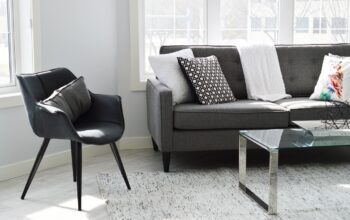The New Frontier: Design Meets Manufacturing
Manufacturing design in 2025 is undergoing a quiet revolution. It’s not just about making things look better — it’s about smarter, faster, and greener ways to bring ideas to life. Here’s a look at some real-world breakthroughs transforming factories and products today.
1. Topology Optimization Accelerates Creativity
Imagine painting a sculpture in 3D space — that’s what topology optimization feels like, where computers map out the best way to place materials for strength and efficiency. Thanks to new algorithms developed by teams from Brown University and international labs, this process is now 4 to 5 times faster than before.
This leap doesn’t just save time; it unlocks the potential to create more complex, lightweight, and efficient parts — perfect for industries like aerospace and automotive. As one expert coined it, it’s like going from sketching with sticks to painting with pixels.
2. 3D Printing: From Prototyping to Production
3D printing has left behind its experimental roots and become a mainstream manufacturing powerhouse. Today, it’s a champion of customization — from custom prosthetics tailored to a patient’s exact anatomy to niche consumer products.
Added bonus? It slashes material waste by building only what’s needed and lets companies do rapid prototyping in hours versus weeks.
3. Smart, Sustainable Materials Stepping Up
One standout design is edible cutlery made from rice flour and soy protein — sturdy enough to handle hot soups yet biodegradable or edible after use. This kind of innovation shows how engineering can marry function with environmental responsibility, challenging the throwaway plastic culture.
Similarly, everyday items like umbrellas are being redesigned with user-friendly mechanics and recycled components, making design both practical and planet-friendly.
4. AI and Data: The Invisible Design Partners
Behind the scenes, AI is becoming a creative ally — helping designers use predictive analytics to test how buildings or products perform before they are made. This “science-led design” means decisions are backed by data, improving efficiency and sustainability.
Integrating AI tools with human creativity is opening new doors in collaboration — from biomedical fields to robotics — making design smarter and more human-centric.
Why This Matters
These advances aren’t just tech trends; they reshuffle the whole manufacturing playbook. Faster design cycles, hyper-customized products, smarter material use, and sustainable thinking make manufacturing more resilient and responsive.
In layman’s terms: it’s about working smarter, respecting our planet, and making products that truly fit people’s needs — all at speeds and costs that make good business sense.
Manufacturers adopting these design innovations are the ones setting the pace for a more efficient and sustainable tomorrow.
References:
- https://moldstud.com/articles/p-top-business-intelligence-trends-in-manufacturing-to-watch-in-2025
- https://techxplore.com/news/2025-07-faster-topology-optimization-emerging-industrial.html
- https://schoolposterprinters.com/3d-printing-in-2025-technology-applications-and-future-trends/
- https://www.floortrendsmag.com/articles/113816-mid-year-editorial-flooring-industrys-defining-moments-of-2025
- https://rvmindia.in/is-manufacturing-profitable-in-2025-trends-data-and-strategies-for-modern-manufacturers
- https://www.yankodesign.com/2025/07/08/top-10-most-ingenious-designs-that-will-change-how-you-live-red-dot-awards-2025-winners/
- https://www.jll.co.id/en/trends-and-insights/research/2025-outlook-on-global-design-trends
- https://community.wacom.com/en-us/graphic-design-trends-2025/



